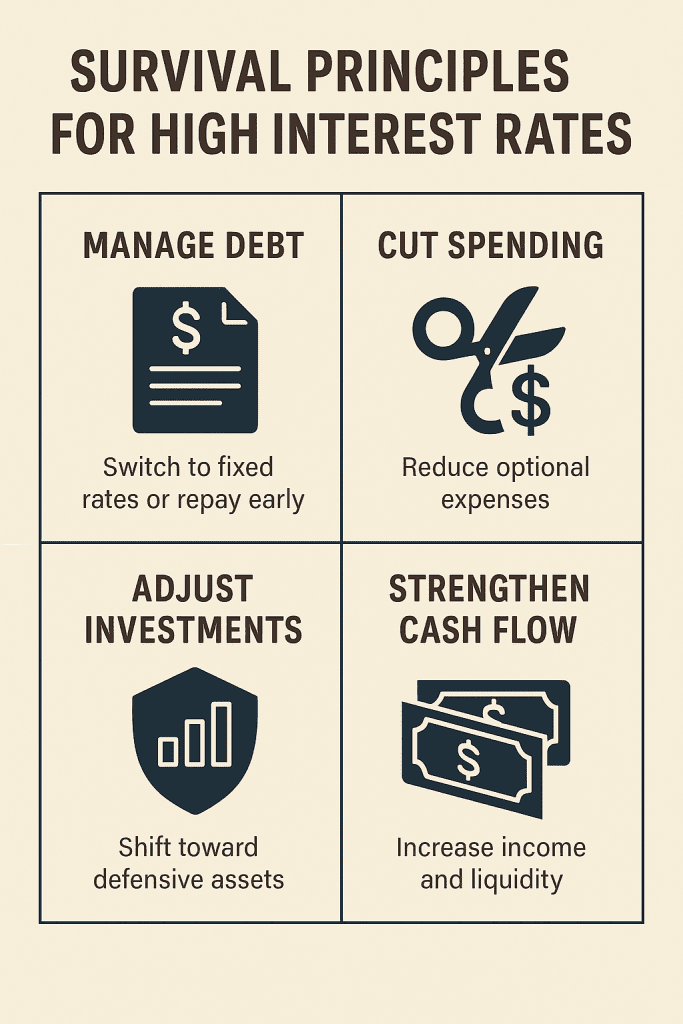
1) Debt Management — “Cutting Interest Is the Best Investment”
- Variable → Fixed Rate Consideration
- Even if today’s fixed rates look high, they protect you if rates climb further.
- If rates are already peaking, keeping variable may work — but timing is crucial.
- Early Repayment (Prepayment)
- Paying down debt at 6–7% interest beats earning 2% in savings.
- Always check prepayment penalties or lost tax benefits before acting.
- Refinancing
- Worth it if the new rate is lower and savings exceed refinancing costs.
- Improved credit score or rising home value may unlock better terms.
2) Spending Strategy — Split Into “Essential, Optional, Postponable”
- Essential: housing, healthcare, education.
- Optional: dining out, vacations, hobbies — cut these first.
- Postponable: big-ticket items like cars or appliances — delay until rates ease.
In a high-rate world, cash flow defense is priority #1. Don’t take on new debt for non-essentials.
3) Investment Strategy — “Shift Toward Defensive Assets”
- Bonds: High rates mean better yields — time to increase allocation.
- Dividend/Defensive Stocks: Consumer staples, utilities, healthcare.
- Cash & Money Market Funds (MMFs): Earn safe yields while keeping liquidity.
- Avoid leverage: Borrowing to invest is especially dangerous in high-rate times.
In high interest rate environments, defense beats offense.
4) Cash Flow Management — “Small Habits Save Big Money”
- Autopay discounts: Many lenders cut rates 0.2–0.3% for autopay.
- Split repayments: Biweekly loan payments lower average balances and reduce interest.
- Extra income streams: A side hustle or freelance income can offset interest burden.
5) High Rates Also Create Opportunities
- Savings & Deposits: Higher yields on low-risk assets.
- Dollar & Foreign Assets: Currency appreciation from rate differentials.
- Real Estate: Higher rates cool demand, creating buyer’s opportunities.
6) Action Checklist
- List your debts: fixed vs variable, maturities, early repayment terms.
- Categorize expenses into essential / optional / postponable.
- Allocate spare cash into bonds, deposits, MMFs.
- Rebalance investments: less leverage, more defensive positions.
- Build liquidity to prepare for opportunities after peak rates.
30-Second Summary
- Borrowers: Cut debt costs with fixed rates, early repayments, or refinancing.
- Households: Defend cash flow by slashing optional spending.
- Investors: Go defensive — bonds, dividend stocks, and cash reserves.
- Opportunities: High-rate environments reward savers and patient buyers.
High interest rates are both risk and opportunity. The key is protecting today’s cash flow while positioning for tomorrow’s openings.
